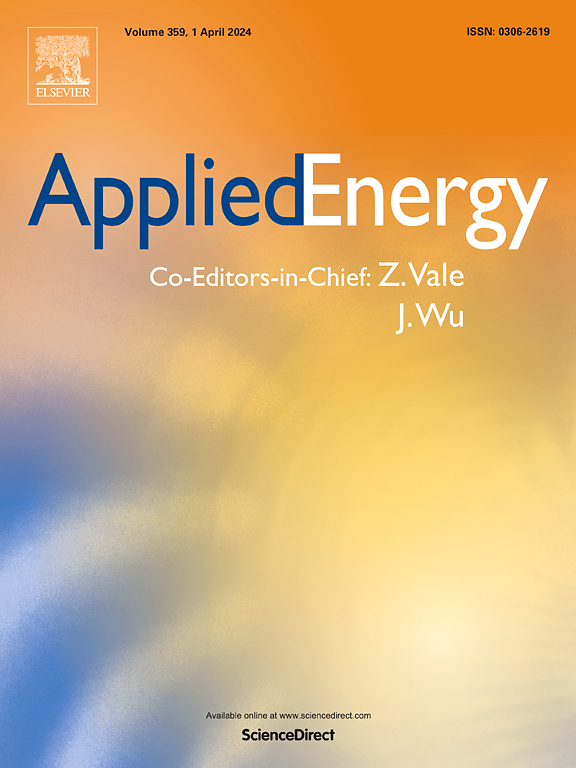实现公平广泛的住宅建筑电气化——以洛杉矶为例考察障碍、策略和机会
IF 11
1区 工程技术
Q1 ENERGY & FUELS
引用次数: 0
摘要
鉴于住宅建筑消耗的能源是美国第三大最终用途部门,其中大部分能源来自化石燃料燃烧,因此通过电气化使住宅建筑脱碳势在必行。本文以洛杉矶为例,对不同效率水平下的四种电气化升级进行了技术经济学建模。然后将这些电气化升级置于全面住宅建筑电气化的大背景下,以了解这一过渡的公平结果。结果表明,通过最低效率的电力技术实现电气化将增加使用最常见天然气设备的家庭的成本,并将增加所有家庭的能源负担,低收入家庭的能源负担相对增加是高收入家庭的两倍。此外,在这种情况下,洛杉矶电网的年用电高峰和日用电高峰将分别增加40%和50%。为了满足这些能源的生产、传输和分配需求,洛杉矶计划将电费提高六倍。虽然通过最高效率的电力技术实现的电气化将减少全年和每日的总电力需求,但它将减少所有家庭的能源负担,低收入家庭的减少幅度最大,并且它将减少任何地方的租户的年度水电费,从200美元到750美元升级到高效空间供暖,从40美元到90美元升级到电储热泵热水器。鉴于这些障碍,政府和公用事业公司必须找到支持家庭,特别是弱势家庭向住宅建筑电气化过渡的战略。本文章由计算机程序翻译,如有差异,请以英文原文为准。
Achieving equitable widespread residential building electrification – examining barriers, strategies, and opportunities using Los Angeles as a case study
The decarbonization of residential buildings via electrification is imperative given that the energy consumed by residential buildings is the third largest end use sector in the United States with a majority of this energy being derived from fossil fuel combustion. Using Los Angeles as a case study, this paper models the techno-economics of four electrification upgrades at a variety of efficiency levels. These electrification upgrades are then put into the broad context of full residential building electrification to understand the equity outcomes in this transition. Results show that electrification via the lowest efficiency electric technologies will increase costs for households with the most common natural gas equipment and will increase the energy burden for all households, with low-income households experiencing twice the relative increase in energy burden as compared to higher income households. Additionally, under this scenario, the grid in Los Angeles will see a 40 % and 50 % increase in total annual and daily peak consumption, respectively. To meet these energy generation, transmission, and distribution needs, Los Angeles projects a six-fold increase in electricity rates. Whereas electrification via the highest efficiency electric technologies will decrease the total annual and daily electricity demand, it will decrease energy burden for all households, with the greatest reductions experienced by low-income households, and it will decrease the annual utility bills of renters anywhere from $200 to $750 with an upgrade to high-efficiency space heating and $40 to $90 for an upgrade to an electric storage heat pump water heater. Given these barriers, governments and utilities must find strategies to support households, especially vulnerable ones, in this transition to residential building electrification.
求助全文
通过发布文献求助,成功后即可免费获取论文全文。
去求助
来源期刊

Applied Energy
工程技术-工程:化工
CiteScore
21.20
自引率
10.70%
发文量
1830
审稿时长
41 days
期刊介绍:
Applied Energy serves as a platform for sharing innovations, research, development, and demonstrations in energy conversion, conservation, and sustainable energy systems. The journal covers topics such as optimal energy resource use, environmental pollutant mitigation, and energy process analysis. It welcomes original papers, review articles, technical notes, and letters to the editor. Authors are encouraged to submit manuscripts that bridge the gap between research, development, and implementation. The journal addresses a wide spectrum of topics, including fossil and renewable energy technologies, energy economics, and environmental impacts. Applied Energy also explores modeling and forecasting, conservation strategies, and the social and economic implications of energy policies, including climate change mitigation. It is complemented by the open-access journal Advances in Applied Energy.
 求助内容:
求助内容: 应助结果提醒方式:
应助结果提醒方式:


